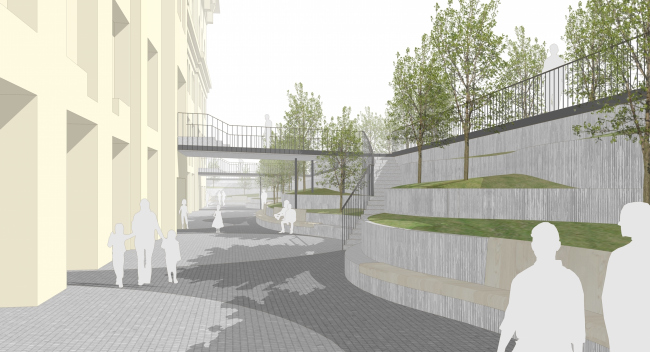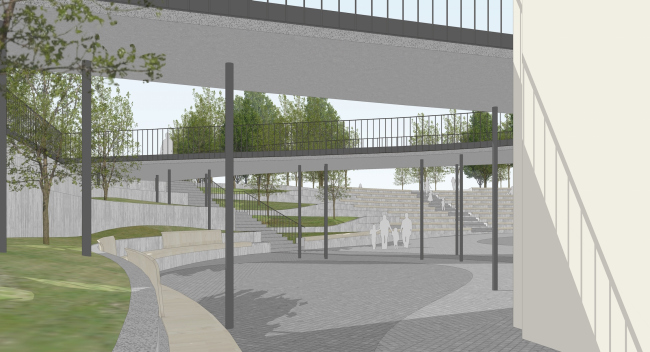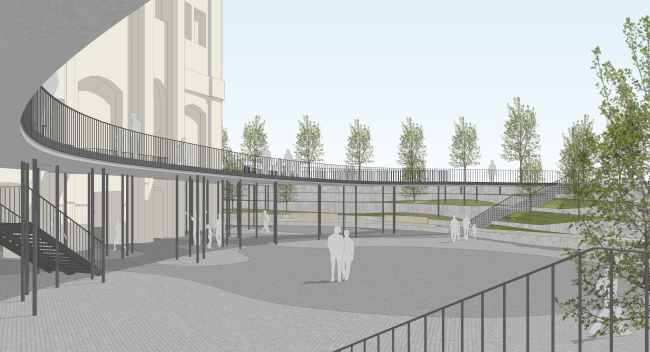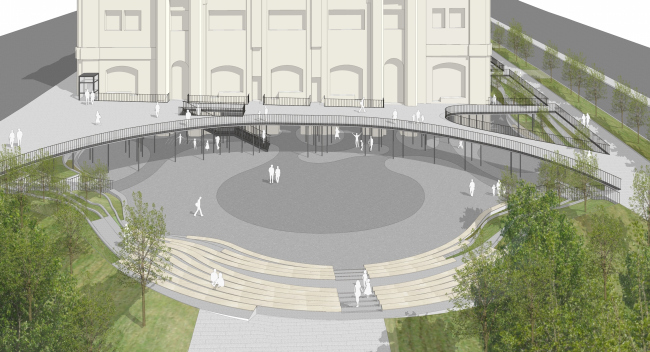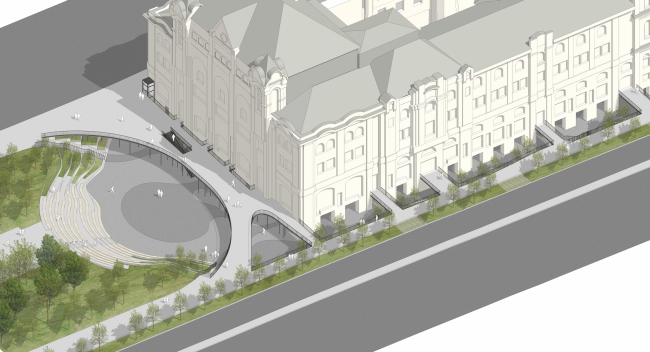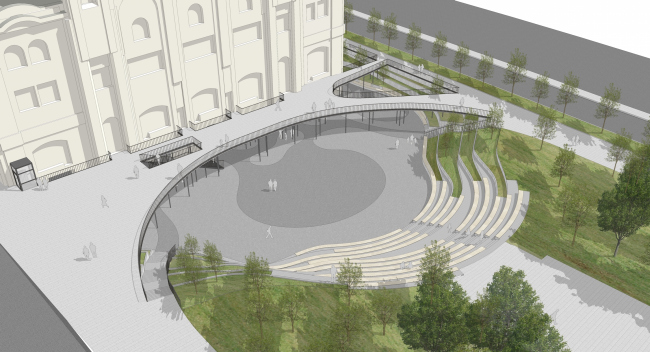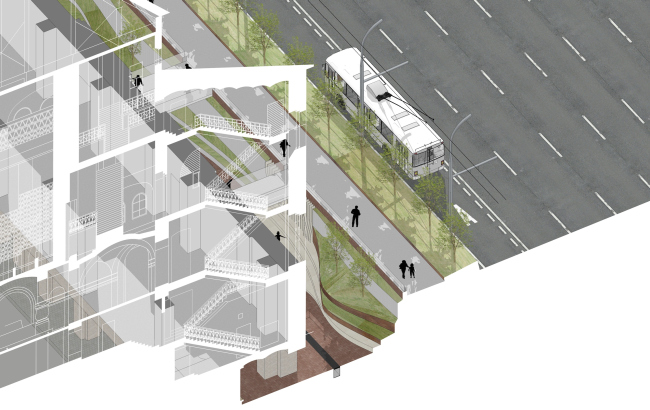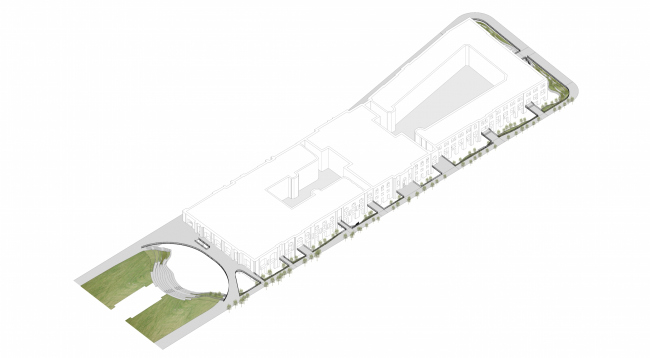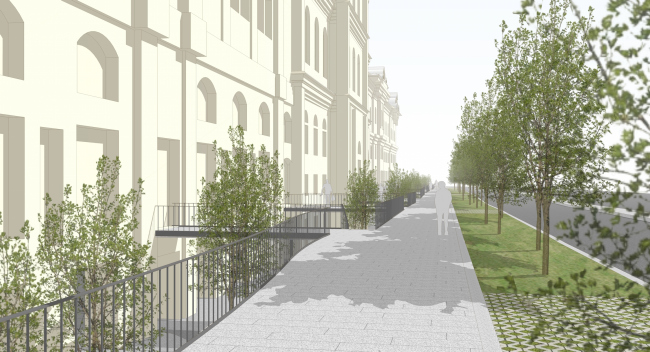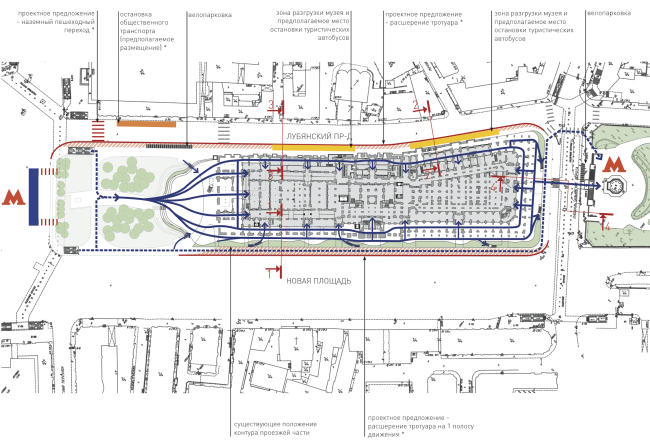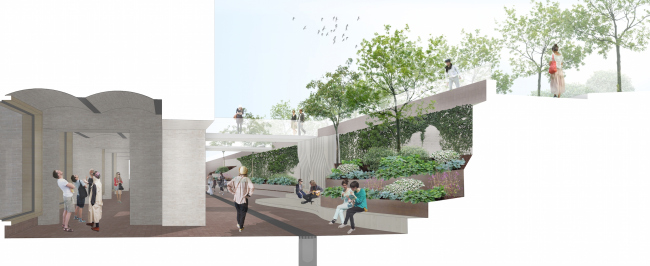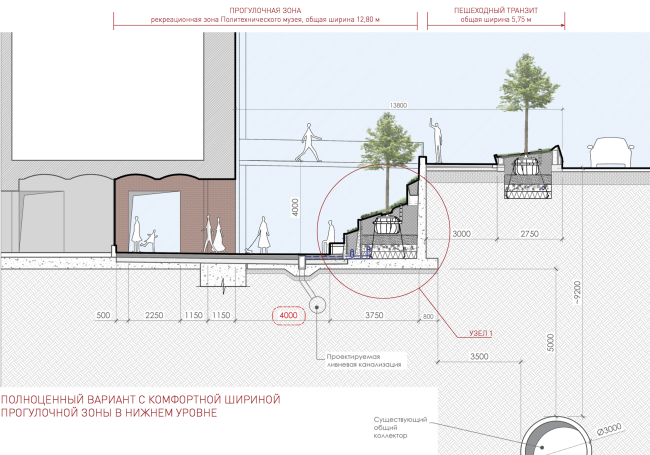|
Published on Archi.ru (https://archi.ru) |
|
| 09.02.2017 | |
|
Jurassic Polytechnic Park |
|
|
|
|
| Architect: | |
| Junya Ishigami | |
| Dmitry Likin | |
| Oleg Shapiro | |
| Studio: | |
| WOWHAUS | |
|
Lots of bridges, an amphitheater, and relaying of secret engineering lines: a story about how the architects of Wowhaus revised the concept of organizing the territory of the Polytechnic Museum proposed in 2011 by Jun’ya Ishigami. "Museum Park". Organization of the pedestrian zone and the territory adjacent to the Polytechnic Museum. Project, 2016 © WowhausWowhaus developed the concept of the museum park based on a project by Jun’ya Ishigami that won the competition in 2011. With a truly Japanese meticulous care for each and every square inch, Ishigami proposed to dig out, along the building’s perimeter, the old basement floor of the Polytechnic Museum and connect it with small-degree slopes to the mostly empty of visitors little park near the Solovetsky Stone monument, now squeezed by a surrounding automotive ring. 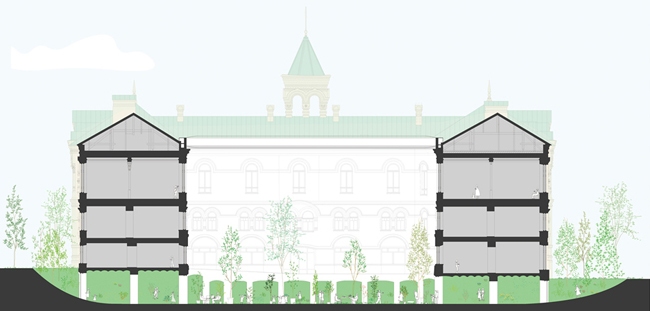 Competition project of reconstructing the Polytechnic Museum, 2011 © Jun’ya Ishigami / Polytechnic Museum / polymus.ru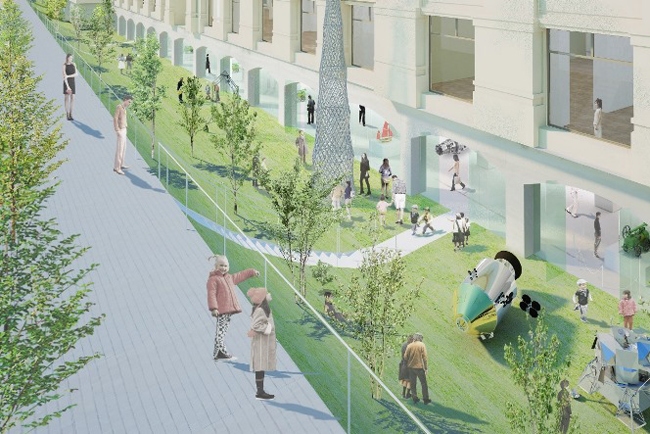 Competition project of reconstructing the Polytechnic Museum, 2011 © Jun’ya Ishigami / Polytechnic Museum / polymus.ru“We were faced with a necessity of reconsidering some of the solutions proposed by the Japanese architects. Their concept was beautiful, and it had some great visualizations as well. The only problem with it was that it missed out the architectural context: the already-existing parks and monuments, the conservation zone, the automotive traffic, and the most complex underground communication lines” – shares the chief architect of the project Mikhail Kozlov. "Museum Park". Organization of the pedestrian zone and the territory adjacent to the Polytechnic Museum. Project, 2016 © Wowhaus"Museum Park". Organization of the pedestrian zone and the territory adjacent to the Polytechnic Museum. Project, 2016 © Wowhaus"Museum Park". Organization of the pedestrian zone and the territory adjacent to the Polytechnic Museum. Project, 2016 © WowhausRouting the broad slopes under the museum building, as Ishigami proposed, turned out to be impossible because their size exceeded the construction area limits. In addition, this would require cutting down the old lime trees in the Solovetsky Stone park which was something that Moscow City Government strictly prohibited. The Wowhaus designers solved the problem by resorting to a more correct geometry: they replaced the slopes with terraces with trees, shrubs, and flowerbeds of all-season blossoming. From the side of the Lubyanka Square, there appeared an amphitheater that can serve as a summer venue for various events and forms the Museum Square in front of one the main entrances of the lower level. The museum entrance will be accessed from the Solovetsky Stone by a bridge resting on a multitude of slender columns, visually all but weightless. The current basement floor will turn into a public zone that will contain cafés, shops, galleries, info points, and booking offices. "Museum Park". Organization of the pedestrian zone and the territory adjacent to the Polytechnic Museum. Project, 2016 © Wowhaus"Museum Park". Organization of the pedestrian zone and the territory adjacent to the Polytechnic Museum. Project, 2016 © Wowhaus"Museum Park". Organization of the pedestrian zone and the territory adjacent to the Polytechnic Museum. Project, 2016 © Wowhaus"Museum Park". Organization of the pedestrian zone and the territory adjacent to the Polytechnic Museum. Project, 2016 © WowhausYet anotherr bridge will lead from the sidewalk to the main entrance on the side of the Novaya Square. In addition, a dozen of smaller bridges will be thrown over the moat and to the remaining doors, including those that are going to be used not as entrances but as emergency exits. "Museum Park". Organization of the pedestrian zone and the territory adjacent to the Polytechnic Museum. Project, 2016 © Wowhaus"Museum Park". Organization of the pedestrian zone and the territory adjacent to the Polytechnic Museum. Project, 2016 © Wowhaus"Museum Park". Organization of the pedestrian zone and the territory adjacent to the Polytechnic Museum. Project, 2016 © Wowhaus"Museum Park". Organization of the pedestrian zone and the territory adjacent to the Polytechnic Museum. THe visitor flows. Project, 2016 © WowhausThe main bridge that bypasses the Museum Square has a sophisticated configuration, and, in addition, it will be constantly changing its tilting angle in order to match the height difference between different parts of the museum building. The section view of the Polytechnic Museum that was built by different architects for thirty years (1871-1907) looks very much like a computer game where the hero has to climb up and jump down: the building’s rooms are situated at a different height, the basement has a step-like quality, and the basement floor that they plan to dig out follows these height drops. From the side of the Novaya Square and the district of Kitay Gorod, one will be able to get to the level of the Museum Park from the metro underpass. The top and bottom levels of the Polytechnic Museum will be connected by intertwining stairways and will create a comfortable route for the transient pedestrians. The public transport plan of the area adjacent to the Solovetsky Stone will also change. In order to join the minor and major parks, they will relocate two bus stops that used to be situated in the Polytechnichesky Proezd. One will be moved over closer to the Ilinka Street, and the other will be situated on the Lubyanka Square. "Museum Park". Organization of the pedestrian zone and the territory adjacent to the Polytechnic Museum. The depression. Project, 2016 © WowhausThe greatest challenge in the implementation of the Museum Park project was about moving the entire set of communication lines. It will become an unprecedented event for the Moscow center, and it will consume more than a third of the total construction budget. A number of difficulties in the implementation of the project have to do with the Moscow climate: the depression around and underneath the museum is sure to accumulate atmospheric precipitation. In order to prevent this kind of issues, the architects provided for an advanced storm water sewage system and an inbuilt heating system under the pavement stones that are meant to keep the snow from melting and then freezing back to become ice. The engineers claim that any serious help from the public utilities will only be needed in the event of serious natural calamities. The issues of supplying green plants to the park that will be situated lower than the overall ground level will be solved by choosing special shade-requiring ground-covering plants and trees that will tower over the sidewalk. Planted along the museum façade, these trees will become a screen that will protect it from dust and grime that will inevitably come from the vicinity of the traffic way. "Museum Park". Organization of the pedestrian zone and the territory adjacent to the Polytechnic Museum. Section view. Project, 2016 © Wowhaus"Museum Park". Organization of the pedestrian zone and the territory adjacent to the Polytechnic Museum. Transport and pedestrian diagram. Project, 2016 © Wowhaus |
|
